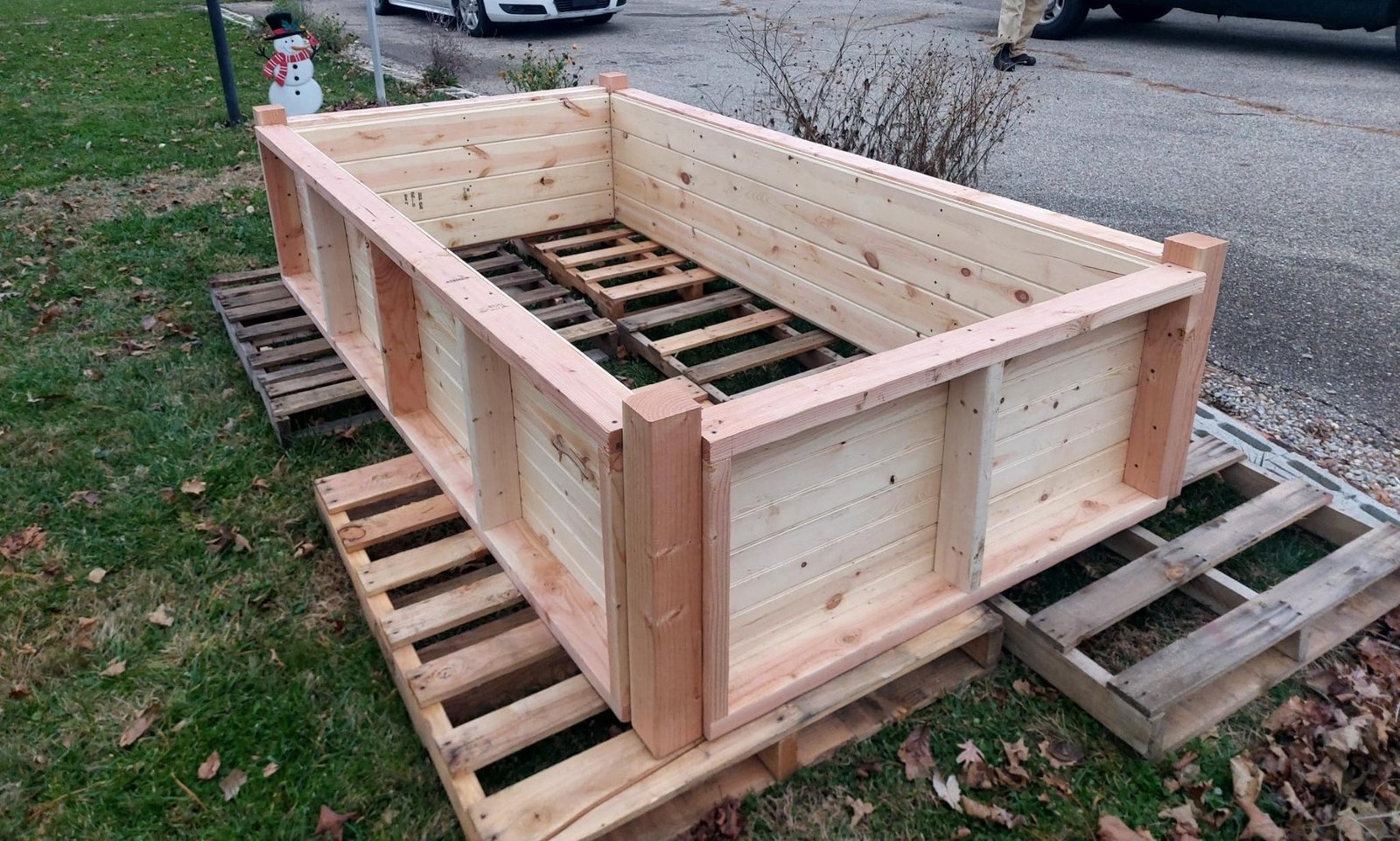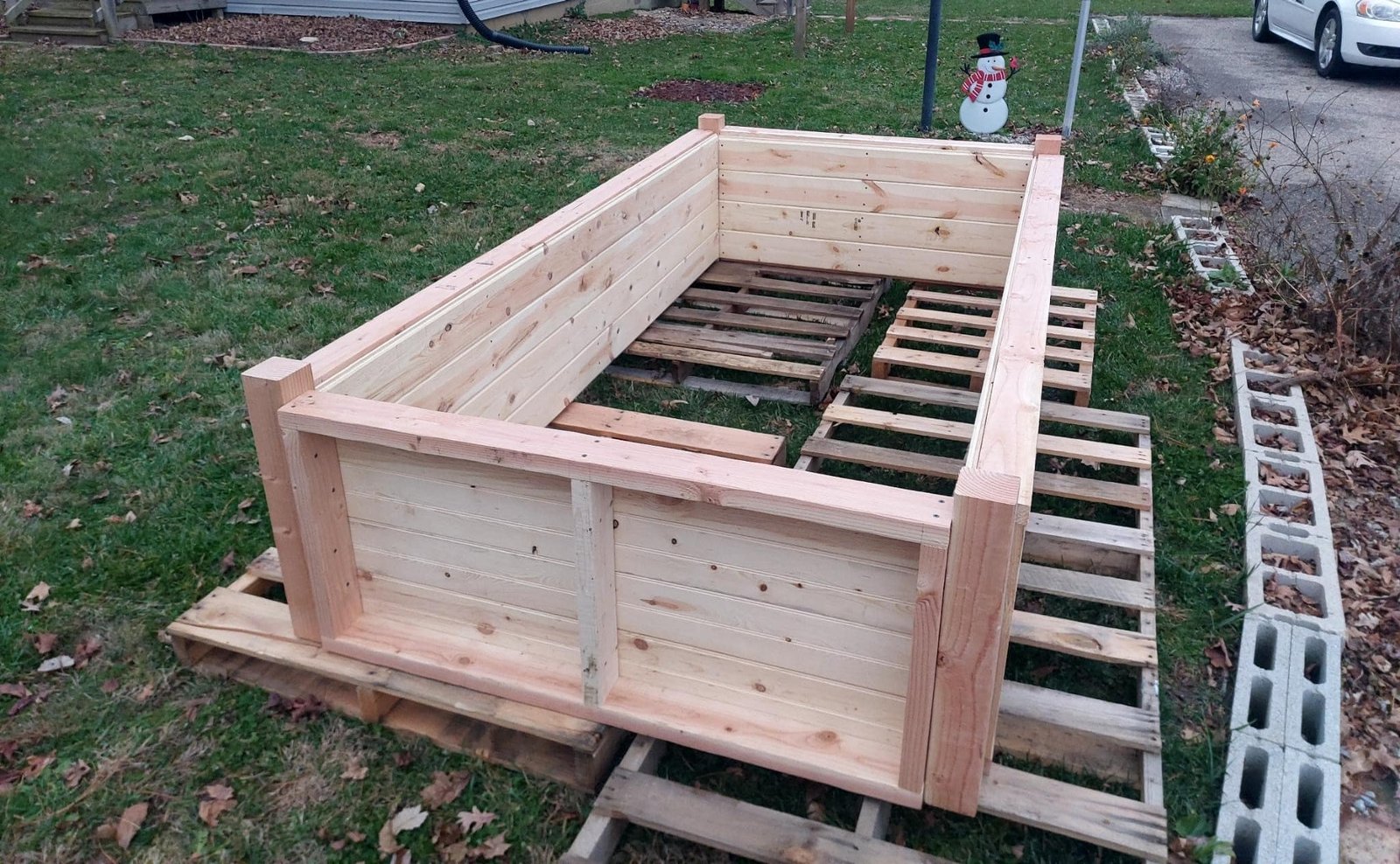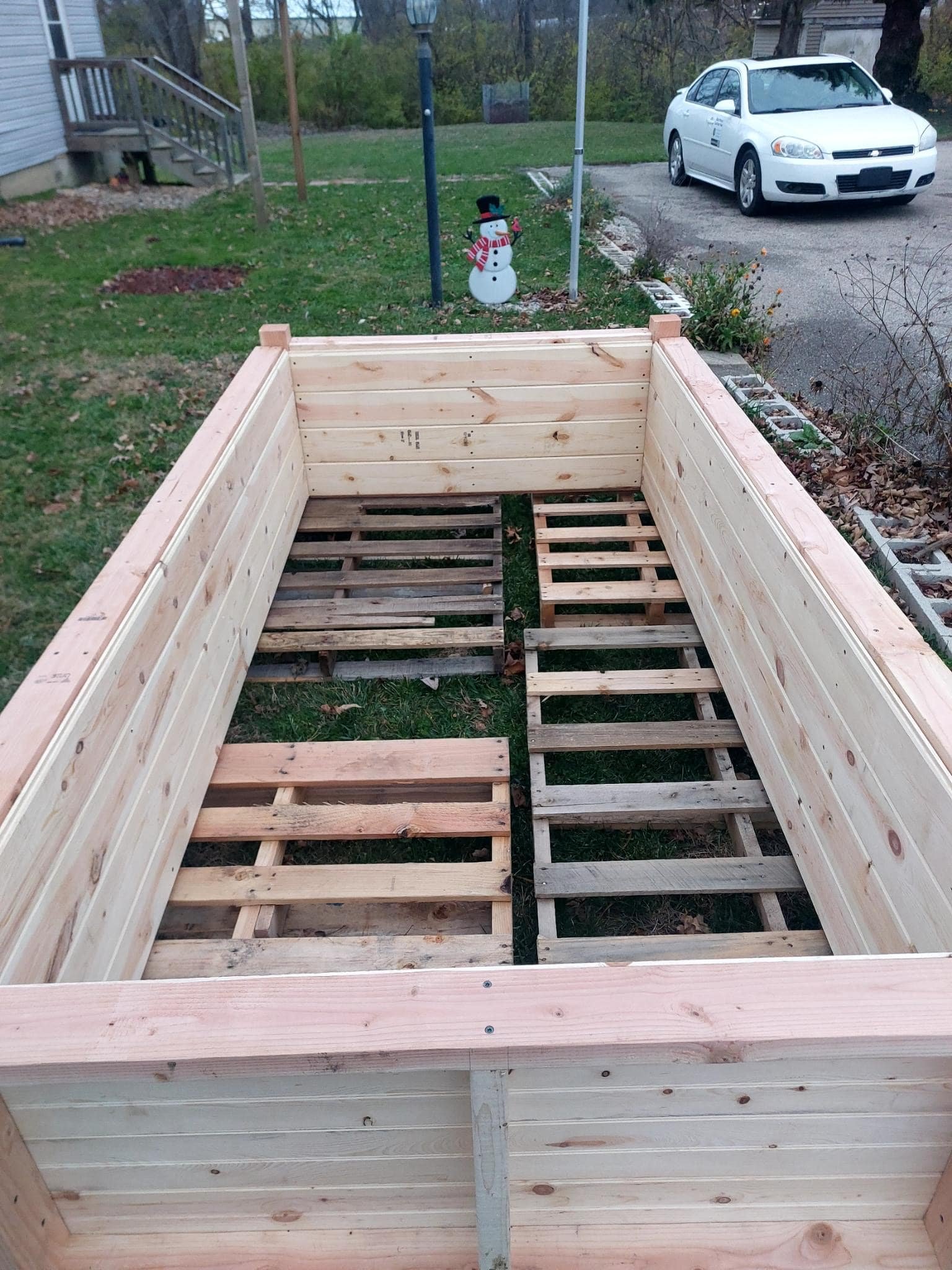Raised Garden Beds
Invest in your future year-round harvests now!
Avoid rising prices due to:
exponential inflation (of material costs)
increased cost-of-living (especially concerning groceries)



This model is made of pine and douglas fir to keep costs lower.
Very sturdy. Justin Rhoades inspired.
Dimensions: 4’W x 8’L x 2’D
Cost: $440
Delivery: $50+
Other considerations:
- FILL: 64SF, of choice materials
- METAL POST CAPS: Asthetic item
- TUNG OIL STAIN: This finish increases longevity of the wood, is non-toxic, and food safe. Apply every 2-3 years, or as needed.
- FOUNDATION: wood chips, pavers, flag stones
If you desire more longevity and premier lumber, inquire about cedar!
Additional cost of $225
CEDAR benefits:
-
- Naturally resistant to rot, decay, and insects due to its inherent oils.
- Non-toxic and safe for use around plants and food.
- Durable and long-lasting, with an expected lifespan of 15-20 years.
- Renewable and eco-friendly, as cedar trees can be sustainably harvested.
- Provides a pleasant aroma that may help deter pests.
Why do I need a raised bed?
-
- You can select optimal soil and compost for growing specific plants and food.
- The raised level is easier on the body (less bending/crouching).
- There is a ledge for holding tools, your harvesting baskets, etc.
- Make a large investment now to hedge the risk of rising food costs (due to inflation) by growing your own food for years to come.
- Avoid increased material costs (due to inflation) and BUY NOW!
Health Benefits of Growing Your Own Food
-
- Nutritious and Fresh Produce: Homegrown fruits and vegetables are typically more nutritious and fresher than store-bought produce, as they are consumed soon after harvesting, allowing for the preservation of vital vitamins, minerals, and phytonutrients (Howard et al. 2016).
- Organic and Pesticide-Free: By growing your own food, you can avoid exposure to synthetic pesticides, herbicides, and other harmful chemicals found in conventionally grown produce. Opting for organic methods ensures a healthier, more sustainable food source (Benbrook 2012).
- Dietary Diversity: Growing a variety of crops allows for a diverse and balanced diet, ensuring adequate intake of essential nutrients and promoting overall health (FAO 2007).
- Physical Activity: Gardening and farming activities provide regular physical exercise, contributing to improved cardiovascular health, strength, and flexibility (Knoepp et al. 2018).
- Mental Health and Well-being: Engaging in food production can have positive effects on mental health, reducing stress, anxiety, and depression while promoting a sense of accomplishment and connection to nature (Maas et al. 2009).
Cost Savings of Growing Your Own Food
-
- Reduced Grocery Bills: Growing your own food can significantly reduce or even eliminate grocery expenses, leading to substantial long-term savings (Low et al. 2010).
- Seed and Starter Plant Costs: While there is an initial investment in seeds, starter plants, and gardening supplies, these costs are often recouped within the first growing season and continue to provide savings in subsequent years (Low et al. 2010).
- Preserving and Storing: By preserving and storing excess produce through canning, freezing, or dehydrating, individuals can extend the life of their harvest and further reduce food expenses (Andress & Harrison 2006).
- Bartering and Sharing: Excess produce can be exchanged with neighbors, friends, or local communities for other goods or services, creating a self-sufficient network and reducing reliance on cash transactions (Littler et al. 2018).
Additional Benefits of Growing Your Own Food
-
- Food Security: Growing your own food ensures a steady supply of fresh, nutritious produce, reducing reliance on grocery stores and protecting against food price fluctuations, shortages, or disruptions in the supply chain (FAO 2007).
- Education and Empowerment: Learning to grow and preserve food fosters a sense of self-reliance, empowerment, and resilience, as individuals gain valuable skills and knowledge (Littler et al. 2018).
- Environmental Sustainability: Home food production can contribute to environmental sustainability by reducing the carbon footprint associated with conventional agriculture, transportation, and food waste (Wezel et al. 2014).
